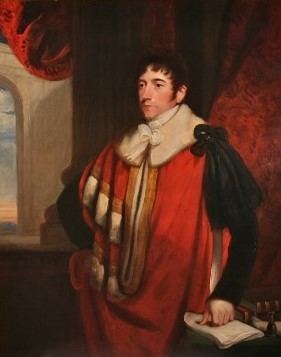 | ||
The title Baron Ashburnham (pronounced "Ash-burn-am"), of Ashburnham in the County of Sussex, was created in the Peerage of England in 1689 for John Ashburnham, grandson of the John Ashburnham who assisted King Charles I to escape from Oxford and Hampton Court Palace. He obtained from the King for his London seat the former priors' house of Westminster Abbey, which had been seized by the Crown at the dissolution of the monastery, rebuilt it attractively and renamed it as Ashburnham House; it now stands as one of the central buildings of Westminster School, and has given the family name to one of the co-ed day houses.
Contents
The 3rd Baron was created Earl of Ashburnham in the Peerage of Great Britain and Viscount St Asaph, in the Principality of Wales, in 1730. The titles all became extinct in 1924, with the death of the 6th Earl; the surviving member of the family was Lady Mary Catherine Charlotte Ashburnham (1890–1953), daughter of the 5th Earl.
The family's wealth was substantially drawn from the Welsh village of Pembrey; as late as 1873 the earls owned 7,568 acres in Wales. They also carried on the iron industry at their extensive landholdings across Sussex, which were the original lands granted to the family at the time of William the Conqueror for services rendered by Robert de Crull or de Crioll at the Battle of Hastings in 1066. Among the estates were three salt houses and Esseborne which the de Crulls changed to Ashburnham. They took on the name Ashburnham and dropped the name Crull, which had been a common surname among the Anglo-French aristocracy that had dominated England since the Norman conquest. The name change began in the latter days of Edward III's reign when there was a great fear of a French invasion. As a result, the English language experienced a great growth and the Anglicisation of the Anglo-Norman aristocracy began to strengthen a sense of national unity.
The 2nd and 3rd Earls of Ashburnham were successful courtiers. The 4th Earl bought a famous collection of Illuminated manuscripts, which was sold by the 5th Earl, mostly to the British Library, although the Ashburnham Pentateuch is in Paris. The 5th Earl sold off most of the paintings collection, including one of Rembrandt's self-portraits. He was a supporter of the Spanish Carlist claimant, Juan, Count of Montizón.
The country seat of the Earls of Ashburnham was Ashburnham Place in Sussex. It was occupied by the 6th earl's niece, Lady Catherine Ashburnham (1890–1953), until her death in 1953, and subsequently the contents were sold in 1953 and the land in 1953-1957. The estate was inherited by the Reverend John Bickersteth (1926-1991). The house was reduced in size and turned into a Christian conference centre, which caters to both individuals and groups.
Barons Ashburnham (1689)
Earls of Ashburnham (1730)
Toponymy
Ashburnham County in New South Wales, Australia was named after the 4th Earl.
